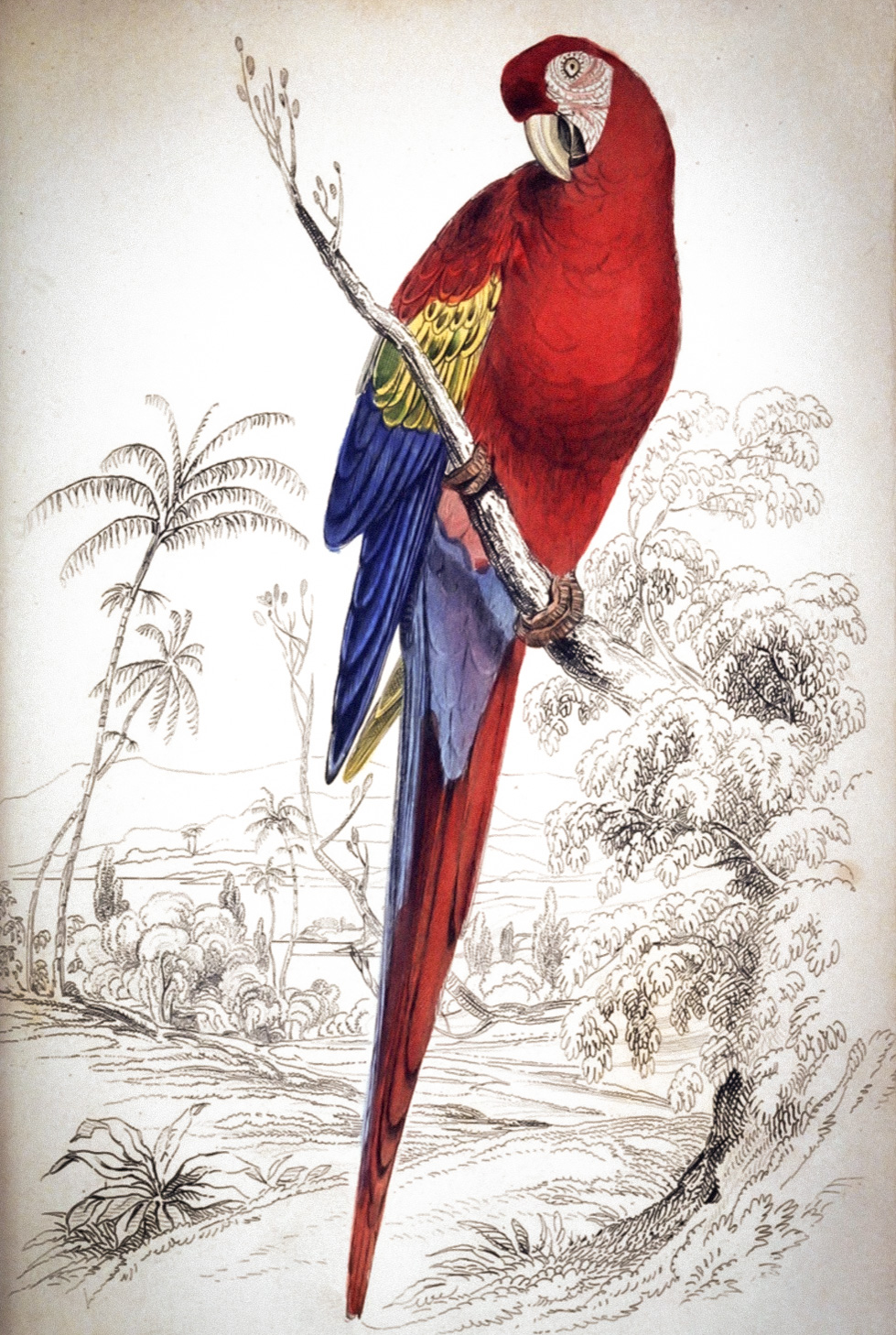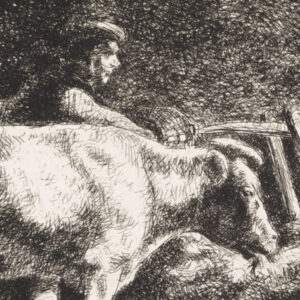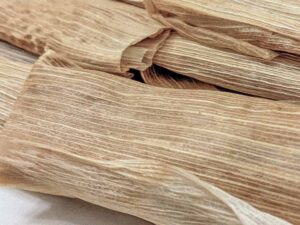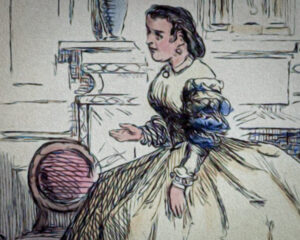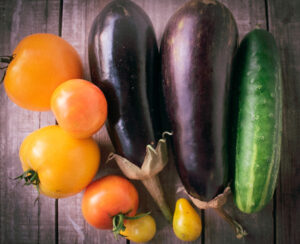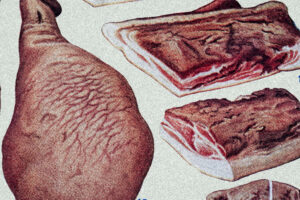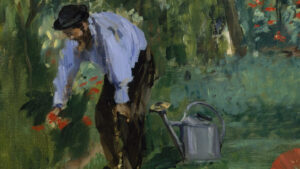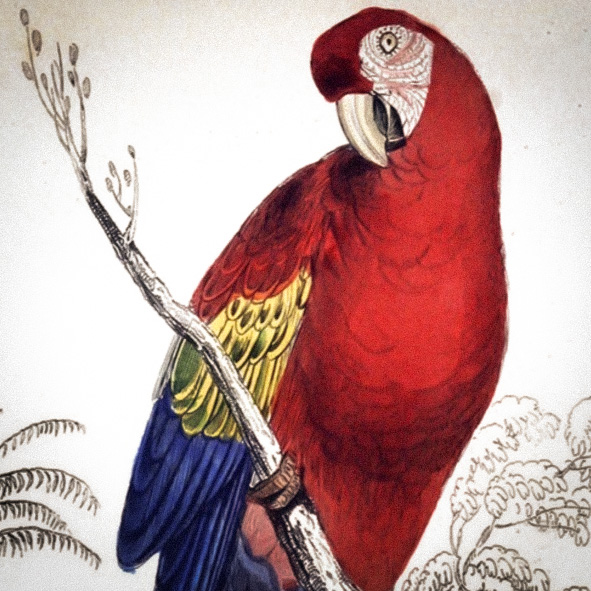
Macaw Feathers, Paper Pulp, & Missed Deadlines
A Brief Reflection on the State of Global Trade

Contrary to popular belief, the state bird of Arizona is the cactus wren, not the snowbird (that migratory breed of Midwestern retiree that descends on the forty-eighth state every winter). Another interesting tidbit of Arizona avian trivia is that, among the collection of artifacts at Arizona State University, are feathers from scarlet and military macaws discovered at the Wupatki National Monument. These feathers, which have been found in ancient settlements throughout Arizona, New Mexico, Utah, and Colorado, are neither native to the region nor the result of avian migratory patterns. Macaws, unlike Minnesotans, don’t migrate. This all leads us to the fact that we really would love for you to be reading this article on paper. But it doesn’t lead us there just yet — some more feathers first.
The feathers are the vestiges of a vast trade route that once economically linked the peoples of what is now the American Southwest and the Huastec people nearly two thousand miles away in east-central Mexico. Theories regarding the use and value of the macaw feathers abound, but what is agreed is the great lengths and creativity that went into sustaining this market.
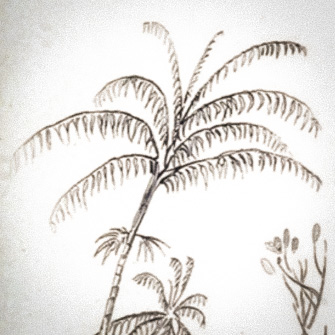 Scarlet macaws were raised in hatcheries on the northernmost end of their natural habitat and then transported deep into the American Southwest along two defined routes, each nearly five hundred miles long. The rotation of live birds and feathers was seemingly timed to maximize their breeding cycle and to ensure product availability. The complicated supply chain served at least eleven settlements for nearly two hundred years, between A.D. 950 and 1150. During this time, peaks in production and trade produced cycles of abundance and shortages throughout the various settlements, in both the southern and northern parts of Arizona and New Mexico. The trade all but ceased for a generation prior to its peak in 1040, due to the adverse effects of weather, treaties, intertribal politics, pandemics, predatory reptiles, monkeys (yes, monkeys), and other industry interruptions and labor-force limitations. In other words, the availability of scarlet macaw feathers in, for example, Chaco Canyon a thousand years ago was subject to a complex and fragile supply chain. Rather like . . . pretty much everything today.
Scarlet macaws were raised in hatcheries on the northernmost end of their natural habitat and then transported deep into the American Southwest along two defined routes, each nearly five hundred miles long. The rotation of live birds and feathers was seemingly timed to maximize their breeding cycle and to ensure product availability. The complicated supply chain served at least eleven settlements for nearly two hundred years, between A.D. 950 and 1150. During this time, peaks in production and trade produced cycles of abundance and shortages throughout the various settlements, in both the southern and northern parts of Arizona and New Mexico. The trade all but ceased for a generation prior to its peak in 1040, due to the adverse effects of weather, treaties, intertribal politics, pandemics, predatory reptiles, monkeys (yes, monkeys), and other industry interruptions and labor-force limitations. In other words, the availability of scarlet macaw feathers in, for example, Chaco Canyon a thousand years ago was subject to a complex and fragile supply chain. Rather like . . . pretty much everything today.
[T]he availability of scarlet macaw feathers in, for example, Chaco Canyon a thousand years ago was subject to a complex and fragile supply chain. Rather like . . . pretty much everything today.
In our modern and more globalized economy, these problems of complexity and fragility can be even more acute and jarring. This truth became apparent to many during the pandemic. Some scarcity was due to increased demand and diminished manufacturing capability during shutdowns. Such was the case with the Great Toilet Paper Panic at the start of the lockdowns, which transformed many local Costcos into scenes from a grade-B dystopian movie. Of course, some examples of scarcity resulted from systematic hoarding, subsequent price gouging, and opportunistic greed; it can be a short and rapid descent from savvy entrepreneur to scoundrel. But most issues of scarcity today are the result of the complex web of international trade and just-in-time inventory management that we have created only recently, but which is still susceptible to all the misfortunes and contingencies of the past. For all the ways modernity isolates itself from external variables, and for all the technological marvels that increase efficiency and production (if you weren’t among the departing snowbirds, you can buy a ripe kiwi at a gas station in Minnesota in the dead of winter), we are still masters of neither our own fate nor our own destiny — a truth far more commonly understood in societies less industrialized than the modern west.
Elsewhere in the world, these current supply-chain challenges create real shortages of staples such as food, water, and medicine. In the United States, our suffering manifests as, for example, a lack of semiconductor chips and the resulting sixty-thousand Ford F150’s lying dormant at Kentucky Speedway. This is a first-world problem, certainly, but still an important reminder of our inability to solve every contingency, no matter how advanced we think we are.
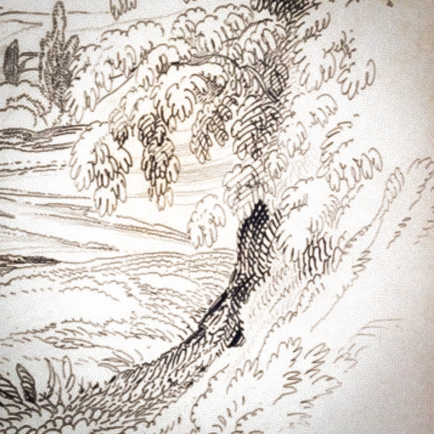 The trade routes in Mesoamerica and the ancient network of spice and silk trade routes of eastern Asia were in many ways nearly as advanced as ours are today. Relatively little has changed, save the methods of transportation and the variety of goods. But unlike those ancient trade routes, more recent ones carry a peculiar mix of goods that once were grown or made locally, now including the consumer electronics and clothing that are increasingly manufactured in areas with cheaper labor and less-restrictive regulations. And all of which remain subject to the same variables that sometimes prevented the scarlet macaw feather from reaching its destination nearly a thousand years ago.
The trade routes in Mesoamerica and the ancient network of spice and silk trade routes of eastern Asia were in many ways nearly as advanced as ours are today. Relatively little has changed, save the methods of transportation and the variety of goods. But unlike those ancient trade routes, more recent ones carry a peculiar mix of goods that once were grown or made locally, now including the consumer electronics and clothing that are increasingly manufactured in areas with cheaper labor and less-restrictive regulations. And all of which remain subject to the same variables that sometimes prevented the scarlet macaw feather from reaching its destination nearly a thousand years ago.
Perhaps in days past we simply took for granted that commerce, the trading of goods between persons for their individual well-being, was also closely tied to the well-being of our communities. Yes, those factories and farms provided us with equipment or food, but they also gave our neighbors work and the means to provide for their families. No, those warehouses weren’t always pretty, but they meant that goods were stockpiled, ready as a buffer against shortages.
Yes, those factories and farms provided us with equipment or food, but they also gave our neighbors work and the means to provide for their families. No, those warehouses weren’t always pretty, but they meant that goods were stockpiled, ready as a buffer against shortages.
With the globalization of most of our commerce, and the adoption of just-in-time manufacturing, our communities have become more vulnerable to the external variables that have always existed, and that will always exist in a world in which we are ultimately not in control. Our commerce feels different: shortages are met not with concern over the people or livelihoods that are affected, but often with a more selfish — if understandable — concern about the inconvenience we experience in not having the product available, or in having to pay a premium to get it.
On the one hand, we have abandoned our commitment to local economies and communities, seeking to reduce costs at all costs, usually at the expense of being subject to interruptions that we have not been, and likely will not be, able to overcome (recall that not so long ago, one ship stuck in the Suez Canal brought twelve percent of global trade to a halt and cost in excess of fifty-four billion dollars of delayed and lost trade over the six-day saga). On the other hand, we become annoyed at the resulting shortages and delays, missing an opportunity to let the variables that interrupt our lives be moments of contemplation and appreciation for what we already have. And missing the opportunity for introspection and solidarity, and the reminder of our dependence on each other.
This all hit home in an unexpected way recently. Our plans to produce a new print issue were scuppered by global shortages of pulp, paper, ink, and labor that we could not work around. Our attempts to skirt the obvious limitations of supplies and trained print technicians became progressively promethean, but were ultimately pathetic. We can’t control the variables any more than anyone else. And we cannot produce a journal except by the relationships and exchange of goods that make all worthwhile human projects possible. So . . . the failures in the supply chain made it impossible for us to go to print in a timely fashion, which made it impossible for us to meet our distribution deadline, which forced us to table the whole project for the moment.
But rather than shake our fists, we ought to join our hands in prayer for those whose livelihood is hurt more severely than ours by the challenges of an increasingly complex supply chain, and we ought to do what we can to help.
Meanwhile, we will find something to be positive about where we can. We opened by saying we would love for you to be reading this article in print. But, come to think of it, had our print issue materialized, then this article presumably would not have — inspired, as it was, by our inability to print. In which case, you wouldn’t have learned about those macaw feathers, but now you have. So that’s something.
